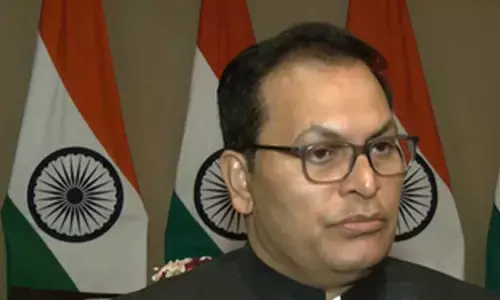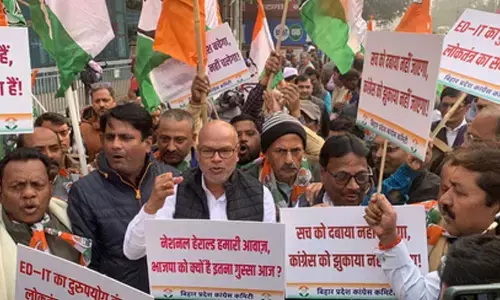NIRF rankings do not determine funding of varsities: UGC chief

Mamidala Jagadesh Kumar
‘The UGC has created NIRF rankings as an eligibility criterion for many of the UGC’s schemes, including the recently launched Regulations on Deemed to be University. However, it is not the only pathway for being eligible for various schemes of the UGC; it is one of the many’
New Delhi: Although the National Institutional Ranking Framework (NIRF) is used as a preferred indicator to assess the performance of an educational institution, University Grants Commission (UGC) chairman Mamidala Jagadesh Kumar asserted that the rankings solely do not determine funding or other regulatory aspects of a university.
Talking to IANS, Prof. Kumar said: “The UGC has created NIRF rankings as an eligibility criterion for many of the UGC’s schemes, including the recently launched Regulations on Deemed to be University. However, it is not the only pathway for being eligible for various schemes of the UGC; it is one of the many.”
After the Education ministry launched the NIRF in 2016, the indicators are used by students, parents, and even the staff to evaluate the overall performance of a university or college.
“It is important to note that rankings are one of the aspects of evaluating the quality and performance of the institution, but they do not determine funding or other regulatory aspects,” the UGC chairman said.
Meanwhile, some of the universities and colleges have been constantly showing poor ranking in NIRF for the last few years.
Whether UGC has planned to issue any special advisories to such institutions, Prof. Kumar said, “The NIRF ranking is itself an incentive and advisory for all institutions. This is a great platform for measuring various institutional quality aspects. It also enables institutions to compare their performances in different categories with other peer institutions.”
He added: “The rankings are a catalyst for quality improvement, healthy competition, and overall advancement. The benefits of the NIRF rankings are themselves an advisory for all the institutions.”
The latest NIRF data released by the Education Ministry showed that a few institutions have slipped in the rankings just within a year.
The UGC chairman commented, “The ranking is not a destination but an essential signpost in the trajectory of the institutional journey. We are confident that the institutions will conduct an internal analysis, which will help them identify areas of improvement. Based on that, the institutions will create an action plan for the following year.”
He further mentioned that since the NIRF ranking is an annual exercise, it allows institutions to work on their weaknesses and strengthen their achievements.
“It is a sustained effort and not merely a one-time endeavor,” Kumar said.
Since the launch of NIRF in 2016, the participation of institutions across the country has increased over the years. But to date, only a small number of colleges out of more than 40,000 colleges in India take part in the NIRF process.
According to Jagadesh Kumar, the NIRF rankings are a great platform for measuring various institutional quality aspects and that is why UGC has set it as an eligibility criterion for various schemes.
“UGC recognises and encourages greater participation from colleges and universities across the country. We acknowledge the effort of every institution that participated in the NIRF ranking,” he said.








